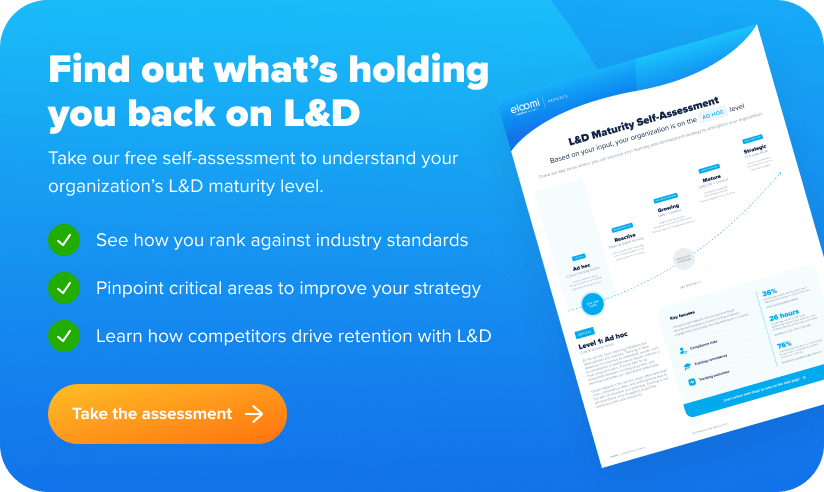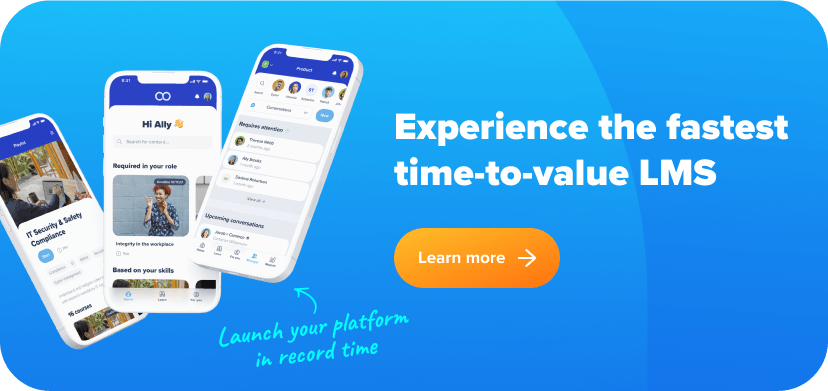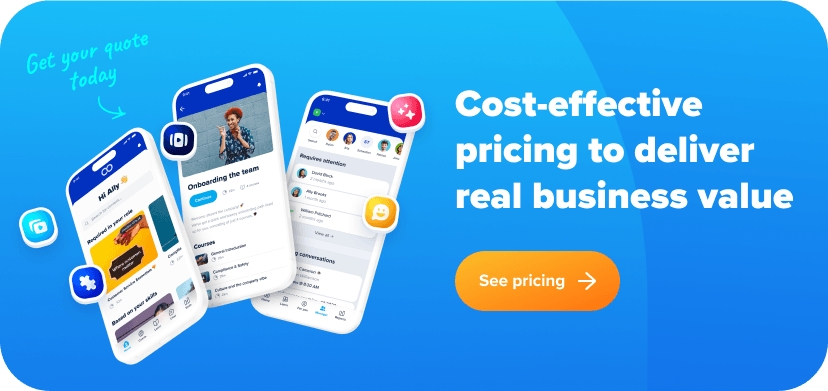While migrating to a new LMS can offer significant benefits, it also presents various challenges, such as complications with data, user adoption issues, and potential downtime. This article aims to provide a need-to-know guide on how to navigate these challenges and achieve a successful LMS migration.
What is an LMS migration?
LMS migration refers to the process of transferring all relevant data (e.g. user records, results) and content (e.g. course materials) from one learning management system to another. Often seeking a more advanced platform, bringing in a better user experience, or cutting down on costs are the motivations, but more on this shortly.
Crucially, switching LMS requires proper planning with respect to data integrity, compatibility of pre-existing content, and the smoothness of transition for users. Proper execution and testing should be done and monitored in a bid to reduce disruption and uphold the necessary standards of learning and training.
Why do companies transition to a new LMS?
One of the most common reasons is the lack of essential features in their current system, which can hinder the learning and development efforts of an organization. As technology evolves, so do the expectations for what an LMS should deliver. If the existing system doesn’t integrate well with modern platforms or fails to receive regular updates, it can quickly become obsolete.
Scalability is another concern; as organizations grow, the LMS needs to accommodate an increasing number of users and a broader range of learning content. Particular types of LMS can struggle with this, such as on-premise or custom-built, whereas cloud-based/SaaS often have capacity to scale built within their foundations.
Additionally, a system that isn’t user-friendly or fails to make learning engaging and accessible will likely see low adoption rates, leading to wasted resources and unmet training goals. A lack of engagement can severely impact the effectiveness of employee learning and result in financials taking a hit, with L&D teams stuck with a big negative in the bank.

Quick guide for migrating to a new LMS
1. Initial planning
Begin by thoroughly assessing your current LMS to identify strengths, weaknesses, and areas for improvement. This will enable you to set clear objectives and goals for the migration, determining what you want to achieve with the new system. Another important aspect to consider is the LMS migration timeline, as some systems will take much longer than others. eloomi, for example, typically completes migration in only 4-6 weeks, which is faster than many competitors, allowing you to see value sooner.
2. Selecting the right LMS
Choose a new LMS that aligns with your organization’s needs and goals. Consider factors such as essential features, scalability, user experience, and integration capabilities. The right LMS should address the limitations of your current system while providing advanced functionalities that support your long-term learning and development objectives.
3. Data mapping
Before testing and migrating, you should map all data from your current LMS, tidying up any errors, duplicates or outdated data that is no longer required. This process reduces the risk of issues during the migration. Proper data mapping ensures that all information can be correctly transferred and up-to-date, avoiding headaches further down the line. Backing up your data is also highly recommended; a best practice that gives you a safety net in case of any unforeseen problems during the migration.
4. Testing
All LMS migrations will be of different scales, with some more complex than others, however you should always conduct thorough testing of the migration process before going live. This step is critical for identifying and fixing any potential problems that could occur during the actual migration.
5. Training and onboarding users
As with any new software or platform, it’s important to make sure all users, including administrators and learners, are trained on the new system and feel comfortable using it. LMS platforms such as eloomi include full onboarding guidance and live support to answer any questions and make your transition as seamless as possible.
6. Go-Live
Once all preparations are complete, proceed with the final migration and go-live phase. This involves executing the migration plan, launching the new LMS, and making it live for all users. A well-structured launch plan is essential for a successful LMS migration, where continued tracking is required to gauge performance and allow for optimizing the LMS based on user feedback to maintain its effectiveness over time.
Common issues during an LMS migration process
While migrating to a new LMS, there are common issues to look out for including data loss and poor user adoption (a frequent problem, often stemming from a lack of proper training or a complicated or awkward UI). Additionally, insufficient planning can lead to delays, stunting the migration process and extending the time before the new LMS is fully operational.
Finally, a lack of customer support during and after the migration can leave organizations struggling to resolve issues, making the transition more difficult than necessary. At any point during the LMS migration process, issues can occur, so having outstanding customer support that’s readily available at all times allows for quick resolutions and limited disruption. Cloud-based SaaS LMS are supplied by vendors who should have the necessary customer support, whereas LMS that are custom-built or open-source won’t to the same degree.
Successful LMS migrations
Selecting the right LMS can lead to significant improvements in organizational training performance, as demonstrated by the following examples of successful LMS migrations.
WS Audiology, a global leader in hearing aid solutions, faced the challenge of training and developing over 3,000 employees across 130 locations worldwide. With eloomi, WS Audiology was able to launch employee training and development initiatives simultaneously around the globe, ensuring consistent and effective learning experiences for their diverse workforce.

They pulled off a successful LMS migration by appointing internal LMS ambassadors to promote their new learning platform on launch day, helping managers and employees get engaged with training right from day one.KILROY, a travel and education company, needed to replace their less flexible and inefficient training system with a more adaptable solution. By choosing eloomi, KILROY quickly deployed new training programs across multiple countries and languages, catering to their international workforce. The implementation of eloomi not only reduced ramp-up time for new hires but also ensured that employees received best-in-class training, enhancing overall performance and efficiency.
Post-migration: long-term success
The success of an LMS migration doesn’t end with the go-live phase. Ongoing support and continuous feedback loops are essential for enabling updates to be rolled out and ensuring employees are engaging with training and accessing the system without any snags. It’s important to keep improving the LMS based on user feedback, making adjustments to keep the system aligned with your needs. At eloomi, on top of our Live Chat and eloomi Academy, every customer gets a customer success manager who will guide them through the LMS migration and provide continuous support for optimizing their LMS down the road. Many other LMS providers do not offer such a service, and it’s one that we believe is critical for an effective migration.
The success of an LMS migration doesn’t end with the go-live phase. Ongoing support and continuous feedback loops are essential for enabling updates to be rolled out and ensuring employees are engaging with training and accessing the system without any snags. It’s important to keep improving the LMS based on user feedback, making adjustments to keep the system aligned with your needs.
At eloomi, on top of our Live Chat and eloomi Academy, every customer gets a customer success manager who will guide them through the LMS migration and provide continuous support for optimizing their LMS down the road. Many other LMS providers do not offer such a service, and it’s one that we believe is critical for an effective migration.







